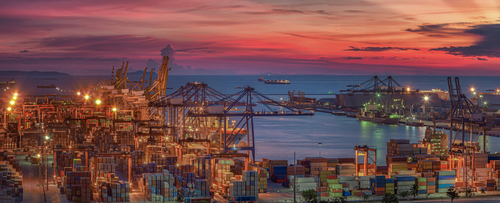Hawkish Fed Probably Worse For Market Than China ‘Trade War’
The trade war drums beating from Washington to Beijing are getting louder, but this is not the orcs of Middle Earth storming out of the gate ready to crack heads.
Everyone and their brother believes something’s got to give on intellectual property protections with regards to China. “The U.S. semiconductor industry shares the Trump Administration’s concerns regarding unfair and discriminatory trade practices that put at risk American intellectual property in China,” John Neuffer, CEO of the Semiconductor Industry Association, said yesterdayimmediately after the memorandum signed by Trump to prepare a roughly 40-day period to increase import duties on China if the two sides cannot come to a trade agreement.
China is one of the most coveted, yet one of the most closed economies in the world. That is how it got so rich, so fast. Good for China. But the U.S. has lower tariffs on most Made in China goods than China has on most Made in the U.S.A. goods.
China is preparing its own laundry list of things to target in a potential tit-for-tat tariff exchange. But an all-out trade war with full-blown protectionist policies not seen since the 1920s? Don’t bet on it.
“An escalating trade war, while a concern for the U.S. economic outlook, is not the most likely outcome,” says PNC Financial’s senior international economist Bill Adams.
What is worse than Washington-Beijing trade tensions is the Fed.
A couple of months ago, hedge fund manager Jordi Visser of Weiss Multi-Strategy Advisers told me that he felt the market was too complacent. Investors were going to soon rediscover volatility. Roughly two weeks later, the Dow fell from its 26,000 points high and never got there again.
This quarter has seen roughly four days of more than 400 point drops in the Dow. Although it’s a moving target, trade tensions and political risks are certainly one reason for the fall.
But another reason is the Fed, now officially under new leadership. The market will keep dropping so long as investors believe a hawkish Fed undercuts fiscal stimulus for the economy.
The Fed Is The ‘Wet Blanket’
For years investors from around the world piled into U.S. stocks on the simple premise that ‘quantitative easing’ policies (aka helicopter money) would lead to higher growth here than in faster growing economies in the emerging world, like China.
“Most investors never entertained the notion that the U.S. would end up leading the world in bad policies, such as huge completely unfunded tax cut at the top of the market and now rampant protectionism,” says Jan Dehn, head of research at Ashmore in London.
As a market participant, Dehn is one of the more outspoken critics of protectionism. “These risks were never priced in,” he says, in regard to tighter monetary policy and trade policy. Trump was elected on a protectionist platform, however.
“This is why U.S. stocks are now extremely vulnerable. Treasuries are better,” Dehn believes. “A slowdown in growth due to bad policies will lead to lower yields. One can just hope that we only get a slowdown, and not a recession because in a recession the average rate cut is more than 500 basis points and the Fed currently only has 175 bips on the books,” says Dehn.
The Fed raised the funds rate by 25 basis points this week. The consensus is that the monetary policy committee is more hawkish, raising its growth and inflation forecasts and lowering it unemployment projections. That’s lead it to revise its projected rate path.
Rates are going higher, for sure.
They still see the economy firing along on all six cylinders. But if it is too strong, their mechanics will yank out the Big Six engine and put in a little four-cylinder one instead.
BNP Paribas expects four rate hikes this year, with the three remaining hikes coming in June, September, and December.
If the market perceives the economy will slow, Treasury yields will decline rather than rise with the Fed funds rate. We might not see a 3% yield in the 10-year this year, if the market perceives a slowdown in the works.
Powell was asked multiple times about tariffs and trade policy risk. His said that some Fed meeting participants brought up tariffs, but no one thought that changes in trade policy should affect the current outlook.
This comment was made before the China memo was released yesterday, however.
Powell said that a number of district bank presidents reported that trade policy has become a concern for some businesses in their districts. He characterized future trade actions, and possible retaliation, as a new risk that has become a more prominent risk to the outlook, but gave no quantification.
On the wage front, Powell said that while wage growth is where it should be given inflation and productivity, wages will go up because the labor market has tightened.
Suddenly, Americans are making too much money.
If inflation and rate-hike worries persist, the result will be heightened market volatility, says USAA’s head of equities, John Toohey. “Investors should not be startled when volatility occurs,” he says.
While rates are worth some attention, investors shouldn’t lose sight of the positives for the economy. A solid economy is a good fundamental base for the stock market. Earnings growth trends are all intact.
Mike Reynal, a fund manager with Sophus Capital, is in the three hikes camp. Reynal manages an emerging markets equity fund. He is not so too worried about the China trade war, either.
“Most of our (China) investments are not linked to trade, so we are not worried about the earnings impact,” he says. “We worry about sentiment. We worry that protectionist policies could lead to a nationalistic response in China, and a short-term impact on portfolio flows.”

